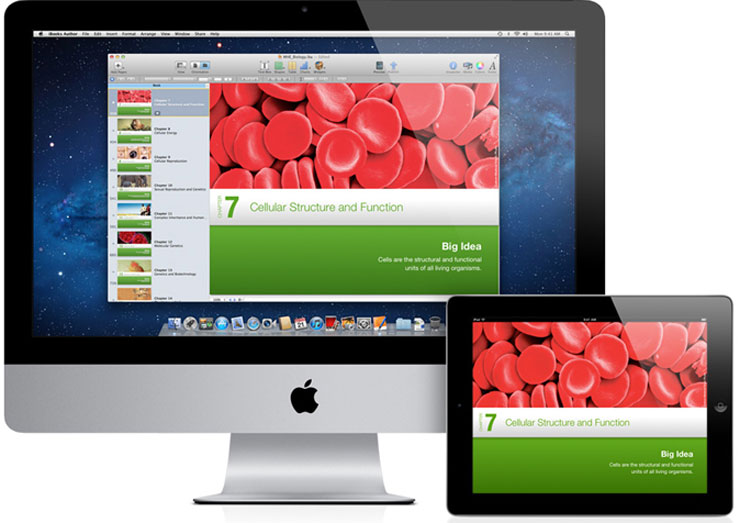Phil Schiller, Apple’s Marketing Vice President, reflected a confident sincerity in Apple’s latest public announcement: “iEducation is deep in our DNA and it has been from the very beginning.” Schiller revealed the company’s plan to address America’s education problem through three apps: iBooks 2, iTunes U, and iBooks Author. But will it do the trick?
Apple’s pitch is alluring. Take a look for yourself. In one glorious trifecta, these free apps hope to bring learners and educators together in a completely revolutionary way. The potential is unifying, inspiring, and transformative, but comes at a cost. Course materials required: your iPad.
But let’s take a look at some of the applications that Apple is offering.
iBooks 2 completely rewrites the textbook. With the ability to download all genres of e-textbooks filled with interactive, compelling media, students have access to features beyond what the printed page binds them to. The media and content seem effortlessly engaging, keeping students organized and active with vibrant visual simulations as well as the ability to highlight, take notes, and easily organize study guides as they read. Students using iBooks 2 needn’t worry about outdated information, either; in the information age, outdated information is the plague of innovation – but now, authors have freedom and ease to constantly update, upload, and rewrite information. To make things more accessible, Apple has capped the ceiling on the cost of textbooks, never to exceed $14.99. The affordable nature of e-textbooks saves students money while reducing the use of paper and ink.
iTunes U, or iTunes University, brings actual courses from renowned schools like MIT and Berkley right to your fingertips at no cost. You can listen to or watch lectures from leading professors, complete assignments, see posted videos, and read linked PDFs. Any content you might find on your program’s Moodle, Blackboard, blog, et cetera, you can find with iTunes U.
iBooks Author, the final piece, presents an entirely new niche to the market of publishing. iBooks Author is more directed to the educators. With a free download of iBooks Author, educators can write and publish their own books for students to download and refer to via their iPad with no additional charge. Similar to Mac’s Keynote program, iBooks Author allows even beginning users the ability to create text, graphics, custom HTML, movies, photo-slideshows, quizzes, and even various interactive 3D widgets with ease and simplicity.
One might imagine educators utilizing the combination of iBooks 2, iTunes U, and iBooks Author to provide highly interactive, instructional ways to reach today’s technologically-driven generation. In fact, they have already done this in many K-12 schools in New York and California with very positive results.
The immediate impression is one of excitement and inspiration. Innovative technology and access to free educational materials, paired with visually driven information, all at the touch of your finger tips. This is great, but negates the obvious barrier that Apple faces: how to make the cost of the iPad cheap enough for most to get their hands on it. The technology, innovation and structure work, but in reality the consumer base isn’t up to speed. Still, students may save money in the long-run by making a one-time purchase of the iPad and receiving their textbooks electronically with this device at remarkable prices.
Does the iPad prescription cure the failing grades and inspire the uninspired? Let’s look at it this way: the revealing of iBooks 2, iTunes U, and iBooks Author has revolutionized the way we learn, think, and interact with information. They are easily at the forefront of technologies that are undercutting the ridiculous cost of printed textbooks by bringing high-grade educational content to a huge user base, and empowering individuals with remarkable publishing power. Who knows, this might just be the most integrated learning tool yet.


Comments are closed.